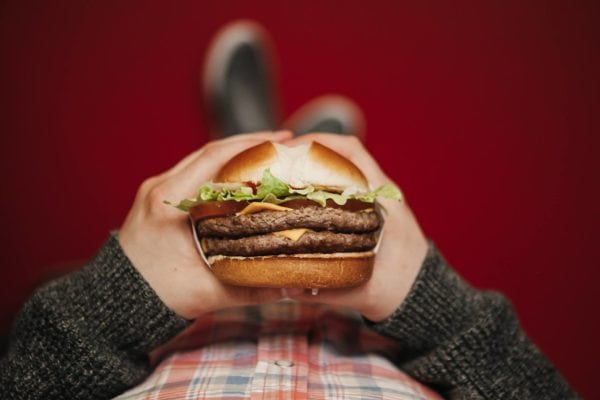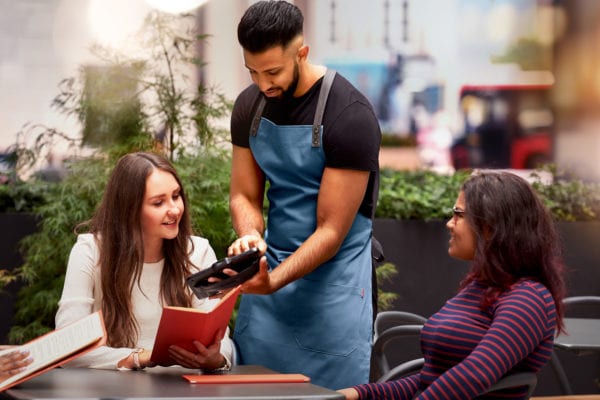PHOTOS
Everyone’s Taking Them, How Are We Sharing Them?
No longer is the act of photographing your food a story in itself (though it was… for a strangely long time). The real story now is how you share, or even market those images, whether you’re a food-loving average guy, a food-loving brand, a large publication, a food blogger, or a celebrity. Instagram is the largest tech topic C+T has covered in three years of existence, and will remain relevant on the food+photos+promotion stage for the foreseeable future, but Snapchat is, as in other verticals, quickly gaining ground here.
Adweek explains why some popular Instagram food accounts are moving to Snapchat. In short, Instagram got huge, added algorithms and advertisements, and individual creators are having a tougher time standing out in a crowded space. And it really is a question of ROI: if you spend hours (or even just an hour, honestly) styling and crafting the perfect plate of food and getting the lighting just so and editing the image to be perfectly pleasing, and Instagram buries it beneath algorithms and no one sees it… what’s the point? Snapchat lends itself to more casual, off-the-cuff content, which is certainly appealing. It just seems more fun.
New social platforms are getting good at doing that which has eluded chefs, restaurants, and food publications for a while: demonstrating and explaining, quickly, what it is, exactly, we’re looking at. Food video does this well, and has for some time, but the social element and casual nature of Snapchat make it a great platform for simple but well-executed how-tos. (Chrissy Teigan had some good ones recently.)
Food videos are indeed taking over the internet , and I imagine in another few months, an emerging platform will become the shining beacon all food content producers look to for sharing. But for now, it’s important to note the shift that the real story lies in sharing your photos and videos, not just making them.
GO
Restaurants + Pokemon Go
Pokemon Go has managed to find its way into every single element of popular culture. Literally, I dare you to try and come up with some industry or even basic human action that hasn’t been affected by the VR game. Of course, bars and restaurants are low hanging fruit here: they’re natural gathering places outside one’s home and open to the public.
The New York Post has a story about restaurants paying for lures inside their restaurant, with one Queens pizzeria noticing ““The amount of people has been astonishing. All day long, from afternoon to evening this past weekend.”
A Medium post from (C+T favorite publication) Inside the Kitchen shares tips for restaurateurs who want to get in on the game. And people love it! Even two weeks after the launch of the game, which appears more than a flash in the pan (but still a summer fad, I think), an excited group of thousands will embark on a Pokemon Go Crawl in San Francisco tonight, with plenty of restaurant and bar specials to hit along the way.
VIRTUAL REALITY
Is VR Video the New Food Video?
Is virtual reality the new food video? Not yet, and probably not for a while. But VR food advertising could become a thing… eventually. A Wall Street Journal reporter got a virtual taste of the new technology from Jack in the Box (again! Fast food leading the way in consumer food technology), and has some interesting thoughts.
The reporter was given the demonstration as part of the publicity campaign for a new menu item, so don’t expect this technology to be rolled out to a mainstream audience anytime soon. According to the chain’s VP of Marketing and Communications, “The press got the thread presented in a way that was very personal and one-on-one, and VR enabled that. Our consumers broadly will get that through television and streaming video and digital television.”
This sort of content begs the question that I’ve asked of food photos and videos that have come before it: will this work as a marketing tool without being able to taste or smell the food item in question? Virtual reality is fun (hey Pokemon!), but will it translate to food?
CASH MONEY
Can Tech Money Help Real Food Scale Up?
This is a really good question, and an important one, at that. There’s more to food + restaurant technology than marketing, customer interaction, the consumer experience, restaurant operating systems, and the like. Though this newsletter chooses to cover the former almost exclusively, there’s an entire arm of food technology that is more food and less tech. I think of it as the food of the future, and while there’s certainly technology involved, it’s not considered as sexy or exciting as some of the flashier sides of the business (drone delivery! Drone delivery!)
Civil Eats has a great piece on the topic, noting that ag-tech (that’s agriculture tech) is seeing a boon in investment dollars from traditionally techy sources (and traditionally food sources, like Kellogg’s and Campbell Soup Co.). That is, VCs and big corporations are investing money into actual food — not the virtual stuff, not an idea, not a digital product — but real, actual food.
As Food+Tech Connect’s Danielle Gould says, traditionally these sorts of investments expect a sustainable business model and increasing returns; this is why some of the hottest tech companies have gotten the most money in the past decade. Small farms and producers just can’t promise this sort of ROI. But still, the future looks promising, as super-prominent entrepreneur-turned-VC Steve Case says, “The future of food is food.”
Digestifs
- Taking a bite out of the food industry: food startups that change the game — Forbes
- How small restaurants tackle the challenge of building apps — Eater
- Six technologies changing the future of food — Engadget



